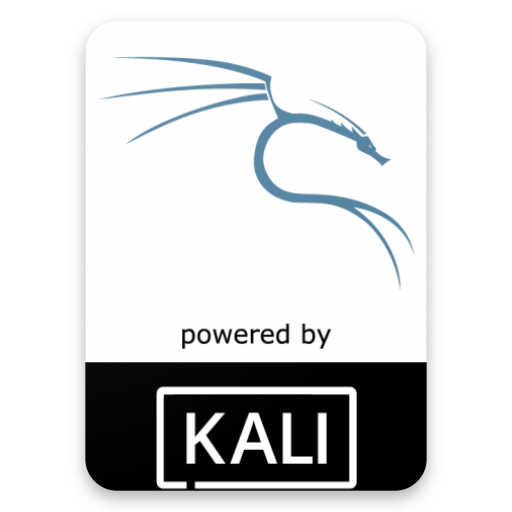Using Official Repositories
The Kali Linux distribution has two repositories, which are mirrored world-wide:
- http.kali.org (mirrorlist): the main package repository;
- cdimage.kali.org (mirrorlist): the repository of pre-built Kali ISO images.
When using the default hosts listed above, you’ll automatically be redirected to a mirror site which is geographically close to you, and which is guaranteed to be up-to-date. If you prefer to manually select a mirror, click on the mirrorlist link near each hostname above and select a mirror that suits you. You will then need to edit your /etc/apt/sources.list file accordingly with the chosen values.
How to Set Up a Kali Linux Mirror
Requirements
To be an official Kali Linux mirror, you will need a web-accessible server (http required and https if possible too) with lots of disk space, good bandwidth, rsync, and SSH access enabled. As of early 2015, the main package repository is about 450 GB and the ISO images repository is about 50 GB but you can expect those numbers to grow regularly. A mirror site is expected to make the files available over HTTP and RSYNC so those services will need to be enabled. FTP access is optional.
Note on “Push Mirroring” — The Kali Linux mirroring infrastructure uses SSH-based triggers to ping the mirrors when they need to be refreshed. This currently takes place 4 times a day.
Create a User Account for the Mirror
If you don’t have yet an account dedicated for the mirrors, create such an account (here we call it “archvsync”):
Adding user ‘archvsync’ …
[…]
Is the information correct? [Y/n]
Create Directories for the Mirror
Create the directories that will contain the mirrors and change their owner to the dedicated user that you just created:
$ sudo chown archvsync:archvsync /srv/mirrors/kali{,-images}
Configure rsync
Next, configure the rsync daemon (enable it if needed) to export those directories:
$ sudo vim /etc/rsyncd.conf
$ cat /etc/rsyncd.conf
uid = nobody
gid = nogroup
max connections = 25
socket options = SO_KEEPALIVE
[kali]
path = /srv/mirrors/kali
comment = The Kali Archive
read only = true
[kali-images]
path = /srv/mirrors/kali-images
comment = The Kali ISO images
read only = true
$ sudo service rsync start
Starting rsync daemon: rsync.
Configure Your Mirror
Configuration of your web server and FTP server are outside the scope of this article. Ideally, you should export the mirrors at http://yourmirror.net/kali and http://yourmirror.net/kali-images (and do the same for the FTP protocol, if you’re supporting it).
Now comes interesting part: the configuration of the dedicated user that will handle the SSH trigger and the actual mirroring. You should first unpack ftpsync.tar.gz in the user’s account:
$ wget http://archive.kali.org/ftpsync.tar.gz
$ tar zxf ftpsync.tar.gz
Now we need to create a configuration file. We start from a template and we edit at least the MIRRORNAME, TO, RSYNC_PATH, and RSYNC_HOST parameters:
$ vim etc/ftpsync-kali.conf
$ grep -E ‘^[^#]’ etc/ftpsync-kali.conf
MIRRORNAME=`hostname -f`
TO=“/srv/mirrors/kali/”
RSYNC_PATH=“kali”
RSYNC_HOST=archive.kali.org
Set Up the SSH Keys
The last step is to setup the .ssh/authorized_keys file so that archive.kali.org can trigger your mirror:
$ wget -O – -q http://archive.kali.org/pushmirror.pub >>.ssh/authorized_keys
If you have not unpacked the ftpsync.tar.gz in the home directory, then you must adjust accordingly the “~/bin/ftpsync” path, which is hard-coded in .ssh/authorized_keys.
Now you must send an email to devel@kali.org with all the URLs of your mirrors so that you can be added in the main mirror list and to open up your rsync access on archive.kali.org. Please indicate clearly who should be contacted in case of problems (or if changes must be made/coordinated to the mirror setup).
Instead of waiting for the first push from archive.kali.org, you should run an initial rsync with a mirror close to you, using the mirror list linked above to select one. Assuming that you picked archive-4.kali.org, here’s what you can run as your dedicated mirror user:
$ rsync -qaH archive-4.kali.org::kali-images /srv/mirrors/kali-images/ &
Set Up cron to Manually Mirror ISO Images
The ISO images repository does not use push mirroring so you must schedule a daily rsync run. We provide a bin/mirror-kali-images script, which is ready to use that you can add in the crontab of your dedicated user. You just have to configure etc/mirror-kali-images.conf.
$ cp etc/mirror-kali-images.conf.sample etc/mirror-kali-images.conf
$ vim etc/mirror-kali-images.conf
$ grep -E ‘^[^#]’ etc/mirror-kali-images.conf
TO=/srv/mirrors/kali-images/
$ crontab -e
$ crontab -l
# m h dom mon dow command
39 3 * * * ~/bin/mirror-kali-images
Please adjust the precise time so that archive.kali.org doesn’t get overloaded by too many mirrors at the same time.

